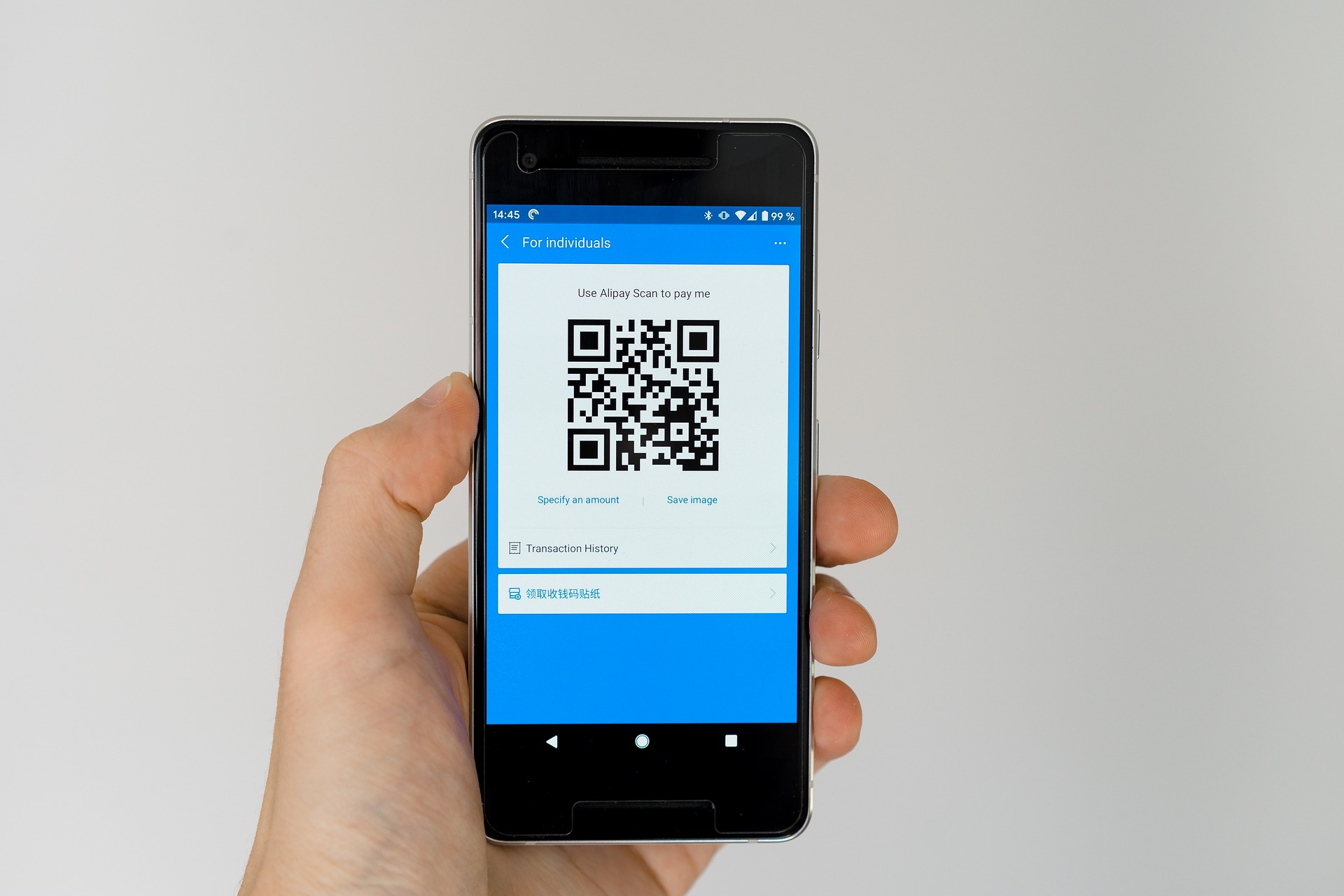10 Best Mobile Payment Innovations
Mobile payment innovations are changing the way consumers and companies transact. Among these are contactless and QR codes powered by artificial intelligence, biometric authentication, blockchain and cryptocurrency, social media and messaging, the Internet of Things, and smart devices.
Author:Emmanuella SheaReviewer:Frazer PughJan 11, 20243K Shares125.9K Views

Mobile payment innovations are changing the way consumers and companies transact. These include artificial intelligence-powered contactless and QR codes, biometric authentication, blockchain and cryptocurrency, social media and messaging, the Internet of Things, and smart devices.
By 2024, the worldwide market for mobile payments is expected to reach USD 75,412.89 million, according to market research. Innovations in the fintech domain are occurring at a rapid pace, and the rise of mobile payments is illuminating new methods of purchasing goods and services.
Biometrics, contactless payments, and BNPL are some of the most important developments. The innovation of the sector can be better explored if one has a firm grasp of digital payments, their value, and their trajectory. Experts predict that the mobile payment technologies market will reach $75,412.89 million by the year 2024.
Super Apps
The surge in super applications, offering a myriad of services within a single platform, has been particularly pronounced with the advancement of mobile payment solutions in various regions.
These versatile apps seamlessly blend texting, eCommerce, ride-hailing, food delivery, and financial services, including payments, creating a unified and convenient experience for users. However, this integration poses challenges for stand-alone mobile payment apps striving to maintain relevance.
Super applications leverage their extensive user bases and established infrastructure, making it challenging for stand-alone payment apps to compete effectively. The ability to handle massive volumes of consumer data across multiple services further solidifies their dominance in the market.
Despite the streamlined experience, users may exhibit hesitancy in sharing critical financial information within these integrated platforms. Concerns about the intricacies of ensuring robust security measures and safeguarding user privacy may present hurdles for widespread adoption.
Mobile Wallets
According to projections, the mobile wallet market will experience a remarkable expansion, with estimates showing that it will reach $16.2 trillion by 2031 thanks to rising adoption in rural areas all over the world.
The widespread appeal of mobile wallets can be attributed to their user-friendly nature. Users simply furnish their bank account details, download a mobile app, undergo identity verification, and gain instant access to online or in-person transactions.
The functionality of mobile wallets extends to facilitating contactless payments through mobile payment apps, harnessing near-field communication (NFC) technology. This innovation allows data transmission over short distances, enhancing the efficiency and convenience of contactless transactions.
Peer-to-Peer Payments
P2P transactions are expected to experience a dramatic increase in the near future. According to eMarketer, mobile P2P payments are projected to generate over $1 trillion in transaction volume in 2023.
Although P2P transactions do not always include merchant relationships, they are nevertheless an integral aspect of the growth of the mobile payment ecosystem.
With P2P payments, users may enjoy the convenience of faster and more hassle-free mobile app transactions involving two or more people.
Due to its convenience and safety, P2P is a preferred method of payment among younger demographics. Sending money is as simple as entering an email address or phone number; users' bank details are never shared.
With peer-to-peer payment methods, there is no longer any need to go through a third party to transfer funds between individuals. Imagine you have to pay back your friend who paid for you to go to a party. In what ways do you act? Pay with the tap of a finger, using an app.
Buy Now Pay Later
A client can use BNPL to put off paying for their goods, whereas embedded lending involves adding loan services into the sales process.
These payment options are becoming more popular as a result of the convenience and adaptability they offer to clients. In the past, "buy now, pay later" (BNPL) and similar promotions were common ways for businesses to entice buyers. However, it has become an essential service in recent times.
You may avoid fees, reduced interest rates, and credit checks with this form of financing, which is similar to using a credit card. With BNPL, consumers may make a quick purchase and put off paying for it until they have more money.
According to Insider Intelligence, Gen Z and Millennials are the intended users of the BNPL payment method. As an added bonus, it has fans of all ages. More and more people are learning about this payment method; therefore, its use is on the rise. In the long run, 62% of BNPL users believe the system will supplant credit cards, as shown in a survey.
A lot of people are only starting to use BNPL. But by 2025, it might grow to 15 times its current amount worldwide, says CB Insights.
Cryptocurrency
With the advent of online shopping, many companies have gone global, which means that cross-border payment processing has become essential. These methods of payment rely on third parties, who often levy astronomical costs.
In terms of transactions, traditional techniques have a number of drawbacks, such as limited availability and opaqueness. According to studies, sending money abroad using bitcoins might really save you money.
Nearly half of those who took the survey see cryptocurrency as a superior option to more traditional means of sending money overseas. Furthermore, 53% of respondents felt that the international costs associated with standard payment methods were too high.
Most options for sending money abroad come with hefty fees and unsavory currency conversion rates. Companies doing business on a global scale may see a significant drop in revenue and sales as a result of these exchange rates.
Blockchain technology is the backbone of cryptocurrencies, eliminating the need for middlemen. This allows for instantaneous transfers by effectively lowering transaction costs. A customer must simply know the public Bitcoin wallet address of the seller to make a purchase.
AI Secured Payments
Digital payment companies' use of AI algorithms and machine learning increases the security of online transactions. Most often, they are used to detect suspicious activities or transactions in order to increase security.
Given the increasing popularity of mobile payments, it is not shocking that hackers target clients who use these methods.
A whopping 61% of all attempted mobile payment fraud attacks are account takeovers, according to research from NICE Actimize. In this case, artificial intelligence (AI) could be useful. The use of transaction filtering allows financial services to detect suspicious behavior and block it.
In order to prevent fraudulent transactions, AI and machine learning may employ real-time user factors like geolocation, biometrics, and buying habits. With the use of AI and ML, fraud detection becomes more accurate.
Because of their data-understanding capabilities, these systems help reduce the number of false positives in fraud detection. In order to detect new tactics used by criminals, these systems must have the ability to learn over time.
MPOS Technology
Due to the proliferation of mobile payment options, mPOS technology has seen explosive growth. Credit card processing systems are now also portable because of this.
All the features of regular cash registers and sales terminals are accessible on these devices thanks to their innovative wireless solution.
Market research firm Future Market Insights predicted that between 2022 and 2032, the mobile point-of-sale (mPOS) industry will expand at a CAGR of 20.9%, reaching $140.2 billion by the end of that decade.
The proliferation of mobile point-of-sale systems is mostly attributable to their versatility; these systems may be utilized not just in conventional retail establishments but also at food trucks, trade exhibits, concerts, fairs, and mobile stores.
Biometrics
An important trend for the future is the ability to authorize payments based on a person's biometric characteristics. With the release of the iPhone X, Apple put face recognition front and center, and now people can use their smartphones to verify online purchases, scan their iris to authorize in-store payments, and more.
Having said that, it seems that the phenomenon goes beyond what is considered mobile payment. Future payment systems may allow you to pay simply by proving your identity, thanks to innovations like fingerprint readers (like the one developed by the Singaporean startup Touché), venous reticle readers (like the one developed by the American startup Keyo), and facial recognition cameras (like the one tested by Alipay at a KFC venue in China).
New realities are emerging that leverage a combination of biometrics and behavioral analysis; for instance, Securedtouch, an American startup, uses the user's screen movements to positively identify them, thereby detecting intrusions and rendering the theft of sensitive data like a fingerprint or password useless.
Blockchain
By providing a trustworthy and auditable method of making financial transactions, blockchain technology has completely changed the mobile payment industry.
Simply put, a blockchain is a decentralized database that reliably and openly logs financial transactions. A cryptographic hash of the prior block is included in each block in the chain, making it impossible to change or manipulate the contents.
Users may rest easy knowing their financial activities are secure with this innovative technology, but there are also many misconceptions and myths surrounding blockchain. You might say it's a two-way street. But so far, the number of blockchain achievements is looking good.
A major advantage of blockchain technology is that it can do away with middlemen, like banks and payment processors, in financial transactions. Payments may be processed more quickly and efficiently using this since transaction costs are reduced.
Additionally, blockchain technology improves cryptographic methods for data and transaction security. For the purpose of participant authentication and transaction authorization, public key cryptography is employed.
By prohibiting unwanted alterations, digital signatures ensure that data remains legitimate and unaltered. To facilitate rapid verification and the identification of efforts at manipulation, hash functions generate unique IDs for blocks and transactions.
Anyone with a mobile device may now use decentralized payment systems made possible by blockchain technology in the context of mobile payments. Users are able to bypass middlemen and send and receive money directly through these platforms.
Central Bank Digital Currencies
Central bank digital currencies (CBDCs) emerge as digital incarnations of fiat currencies, bolstered by the backing of central banks. The primary intent behind CBDCs is to furnish a digital currency option that stands as a viable alternative to traditional cash and other digital payment avenues.
The spotlight on CBDCs intensifies as central banks globally delve into the exploration of their viability. Rooted in the foundational concept of cryptocurrencies, CBDCs offer central banks a mechanism to introduce a government-backed digital currency, leveraging the full credit of the sovereign.
Beyond their foundational purpose, CBDCs find application in mobile payments. They streamline and fortify mobile transactions by eliminating the need for physical cash or conventional credit cards.
One notable advantage of CBDCs is their potential to mitigate payment transaction costs, particularly in the realm of cross-border transfers. This positions CBDCs as catalysts for more efficient and cost-effective global financial transactions.
FAQs - Mobile Payment Innovations
What Are The Latest Innovations In Mobile Payment Technologies?
Innovations in mobile payments include advancements in biometric authentication, contactless payments, blockchain-based transactions, and the integration of artificial intelligence for personalized payment experiences.
How Are Mobile Payment Providers Addressing Security Concerns In Their Innovations?
Mobile payment providers implement robust security measures, including biometric authentication (such as fingerprint and facial recognition), tokenization, and encryption technologies. These measures enhance the security of transactions and protect user data.
Can You Provide Examples Of Emerging Mobile Payment Apps With Innovative Features?
Several mobile payment apps, like Apple Pay, Google Pay, and Samsung Pay, incorporate innovative features such as peer-to-peer payments, split bill functionalities, and integration with virtual assistants. Newer apps like Cash App and Venmo also introduce unique features to enhance user convenience.
What Role Does 5G Technology Play In Shaping Mobile Payment Innovations?
The rollout of 5G technology significantly impacts mobile payments by providing faster and more reliable network connectivity. This enables quicker transaction processing, enhances the user experience, and supports the development of innovative payment applications and services.
How Do Mobile Payment Innovations Contribute To Financial Inclusion?
Mobile payment innovations contribute to financial inclusion by providing convenient and accessible payment solutions for individuals without traditional banking access. Features like mobile wallets, digital banking apps, and inclusive payment ecosystems empower users to participate in the formal financial system.
Final Thoughts
Businesses can benefit from mobile payment innovations, but developers must be careful not to make software more difficult to use, but rather easier to use. The importance of financial transactions is growing as the world becomes more digitalized.
Since more than 93% of the world's money is digital, it's imperative that companies prioritize the ability to accept digital or mobile payments. The development of innovative mobile payment solutions has altered the nature of monetary transactions, speeding up the shift away from cash.
The attractiveness of mobile payment apps has grown due to their accessibility, ease of use, enhanced security, and data-driven personalization.
To make the most of mobile payment apps for financial inclusion, economic growth, and a frictionless cashless experience, stakeholders should resolve privacy concerns, guarantee interoperability, and encourage financial literacy. Reloadly is thrilled to be a part of the mobile payment revolution that is going to happen in the future.

Emmanuella Shea
Author

Frazer Pugh
Reviewer
Latest Articles
Popular Articles
